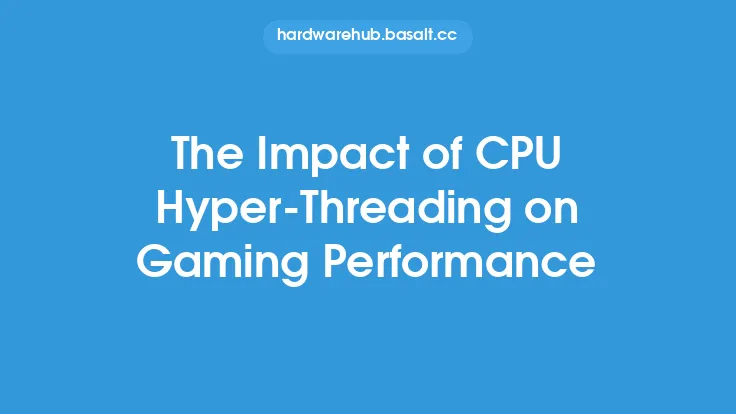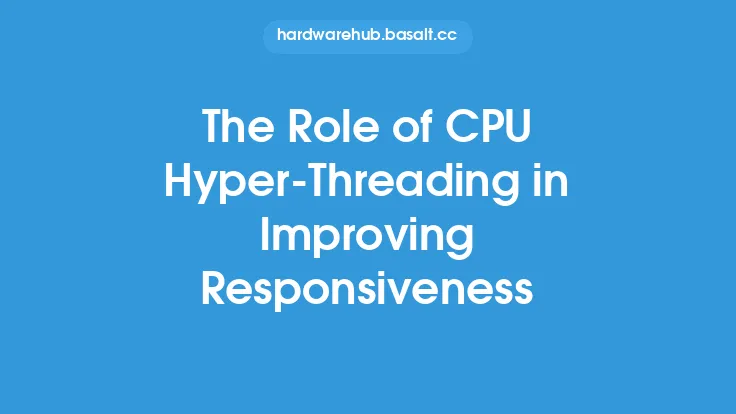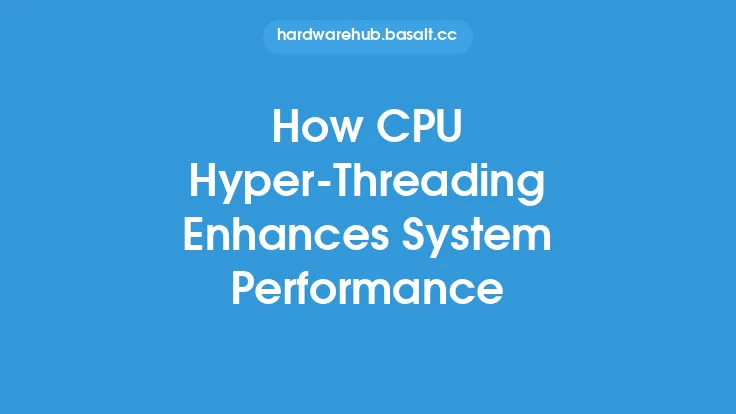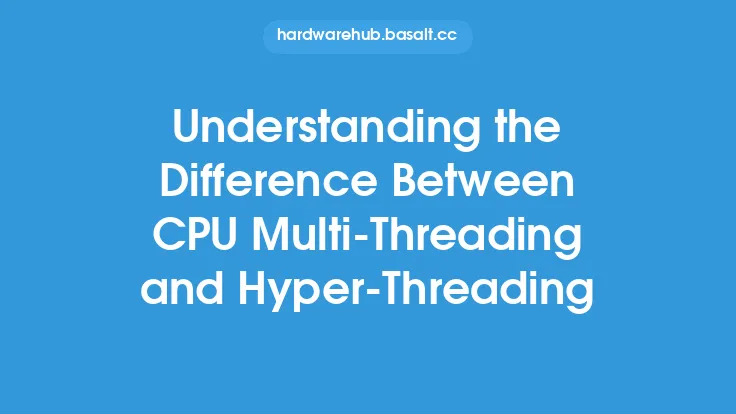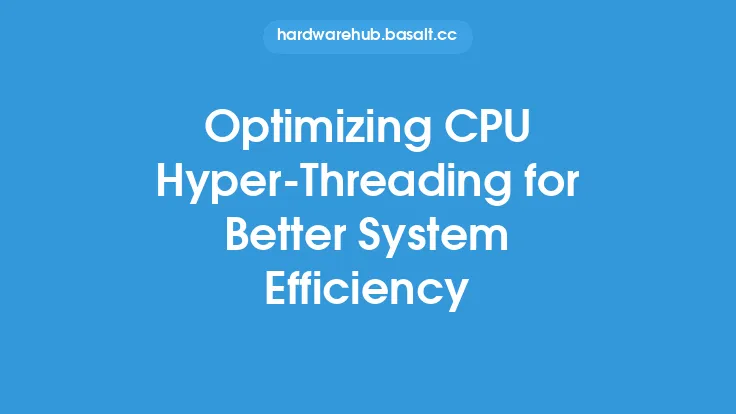When it comes to multitasking, one of the most critical components of a computer system is the central processing unit (CPU). The CPU is responsible for executing instructions and handling multiple tasks simultaneously. One technology that has revolutionized the way CPUs handle multitasking is hyper-threading. Hyper-threading is a technique that allows a single physical CPU core to appear as multiple logical cores, enabling the system to handle more tasks concurrently. In this article, we will delve into the benefits of CPU hyper-threading for multitasking, exploring how it enhances system performance, improves responsiveness, and increases overall productivity.
Introduction to Hyper-Threading
Hyper-threading is a proprietary technology developed by Intel, which allows a single physical CPU core to be divided into multiple logical cores. Each logical core is treated as a separate processor by the operating system, enabling the system to execute multiple threads or processes simultaneously. This technology is particularly useful in multitasking environments, where multiple applications are running concurrently. By providing multiple logical cores, hyper-threading enables the system to handle more tasks, reducing the time it takes to complete each task and improving overall system responsiveness.
Benefits of Hyper-Threading for Multitasking
The benefits of hyper-threading for multitasking are numerous. One of the primary advantages is improved system responsiveness. When multiple applications are running concurrently, the system can become sluggish, leading to delays and frustration. Hyper-threading helps to alleviate this issue by providing multiple logical cores, which can handle multiple tasks simultaneously. This enables the system to respond quickly to user input, even when multiple applications are running in the background. Additionally, hyper-threading improves system throughput, enabling the system to complete tasks more quickly. By handling multiple tasks concurrently, the system can reduce the overall time it takes to complete each task, improving productivity and efficiency.
Technical Benefits of Hyper-Threading
From a technical perspective, hyper-threading offers several benefits for multitasking. One of the primary advantages is the ability to execute multiple threads or processes simultaneously. This is achieved through the use of multiple logical cores, which can handle multiple instruction streams concurrently. Hyper-threading also improves the utilization of system resources, such as memory and I/O devices. By providing multiple logical cores, the system can make more efficient use of these resources, reducing contention and improving overall system performance. Furthermore, hyper-threading enables the system to take advantage of advanced instruction-level parallelism (ILP) techniques, such as out-of-order execution and speculative execution. These techniques enable the system to execute instructions more efficiently, improving overall system performance and responsiveness.
Hyper-Threading and Multithreading
Hyper-threading is often confused with multithreading, which is a related but distinct concept. Multithreading refers to the ability of an application to execute multiple threads or processes concurrently. While multithreading is an important technique for improving system performance, it is not the same as hyper-threading. Hyper-threading is a hardware-based technology that enables a single physical CPU core to appear as multiple logical cores, while multithreading is a software-based technique that enables an application to execute multiple threads or processes concurrently. The combination of hyper-threading and multithreading can provide significant benefits for multitasking, enabling the system to handle multiple tasks concurrently and improving overall system performance and responsiveness.
Real-World Applications of Hyper-Threading
Hyper-threading has numerous real-world applications, particularly in environments where multitasking is critical. One example is video editing, where multiple applications are often running concurrently. Hyper-threading enables the system to handle multiple tasks simultaneously, such as video rendering, audio editing, and color correction. This improves overall system responsiveness and reduces the time it takes to complete each task. Another example is scientific simulations, where multiple tasks are often executed concurrently. Hyper-threading enables the system to handle these tasks more efficiently, improving overall system performance and reducing the time it takes to complete each simulation.
Conclusion
In conclusion, CPU hyper-threading is a powerful technology that offers numerous benefits for multitasking. By providing multiple logical cores, hyper-threading enables the system to handle multiple tasks concurrently, improving system responsiveness and reducing the time it takes to complete each task. The technical benefits of hyper-threading, such as improved instruction-level parallelism and resource utilization, make it an essential technology for environments where multitasking is critical. Whether you are a video editor, scientist, or simply a heavy user of multiple applications, hyper-threading can provide significant benefits for multitasking, improving overall system performance and productivity. As the demand for multitasking continues to grow, the importance of hyper-threading will only continue to increase, making it an essential technology for anyone looking to improve their system's performance and responsiveness.
